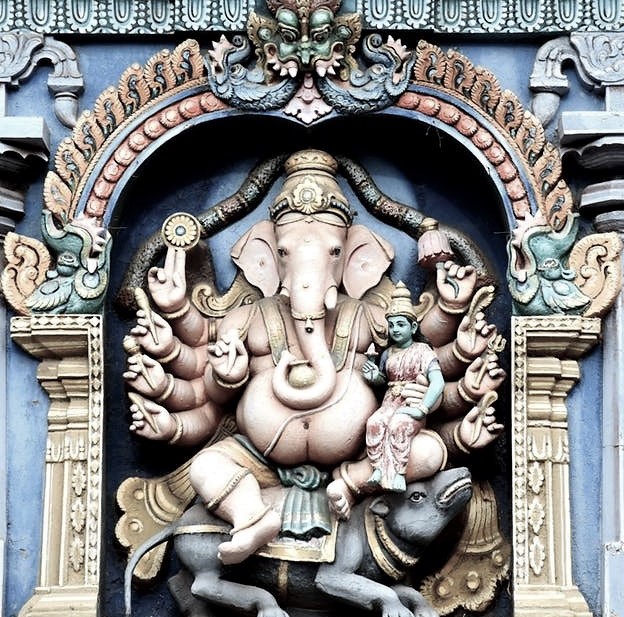- Special FeaturesFoundation Year1437 CESthala TreeTheerthamRathamArchitectureOther SpecialityThis temple is famous for its intricate carvings and unique architecture.
- Sthala Puran
The construction is well documented in a 1436 CE copper-plate record, inscriptions in the temple, and a Sanskrit text Soma-Saubhagya Kavya. Inspired by a dream of a celestial vehicle, Dharna Shah, a Porwal from Ghanerao, commenced its construction in 1389, under the patronage of Rana Kumbha, then ruler of Mewar. The architect who oversaw the project was named Dwepa. There is an inscription on a pillar near the main shrine stating that in 1439 Deepaka, an architect, constructed the temple at the direction of Dharanka, a devoted Jain. When the ground floor was completed, Acharya Soma Sundar Suri of Tapa Gaccha supervised the ceremonies, which are described in Soma-Saubhagya Kavya. The construction continued until 1458 CE. However, according to the audio guide provided to visitors to the site, construction lasted fifty years (and involved 2785 workers). Another source reports that construction continued until 1496, fifty years from 1446. The town of Ranakpur and the temple are named after the provincial ruler monarch, Rana Kumbha who supported the construction of the temple. Rankapur along with Muchhal Mahavir, Narlai, Nadol and Varkana forms "Gorwad Panch Tirth".
- Architecture
Whilst Dilwara temples are known for their sculptural work, this temple is famous for its intricate carvings and unique architecture. It was built in the form of Nalini-Gulma Vimana(a heavenly vehicle Dharna Shah saw in his dreams). This temple is built in Māru-Gurjara architecture. The temple has a garbhagriha in which the main Chaumukha Adinatha idol is placed. The four openings of the sanctum lead to rangamandapa— the Dancing hall, which is connected to a two-storeyed mandapa, which is again connected to another two-storeyed mandapa called Balana and nalimandapa. This courtyard is surrounded by a wall enclosing sub-shrines. The wall is also exclusive on projections like devakulikas and minor deity. The temple has five shikhara amongst which the central one is the largest. The temple is rich with sculptural pieces - carvings created with great skill and artistry.The Shikhara in the temple is symbolic of Mount Meru, the mountain which forms the axis of Jambudvipa with a preaching hall as the Samavasarana.
- Alankar of Deity
- Prayers and BenefitsSpecial Vratas and PrayersOfferings to DeityStotras and Mantras
- FestivalsMahavir Janma Kalyanak
- Sodasha Upcharas
- Prasadhas
- Social ActivitiesAnnadhanMarriageEar BoringHead ShaveDanaasEducation FacilitiesSocial DrivesOther Activities
- Arjita Seva
- Tags

